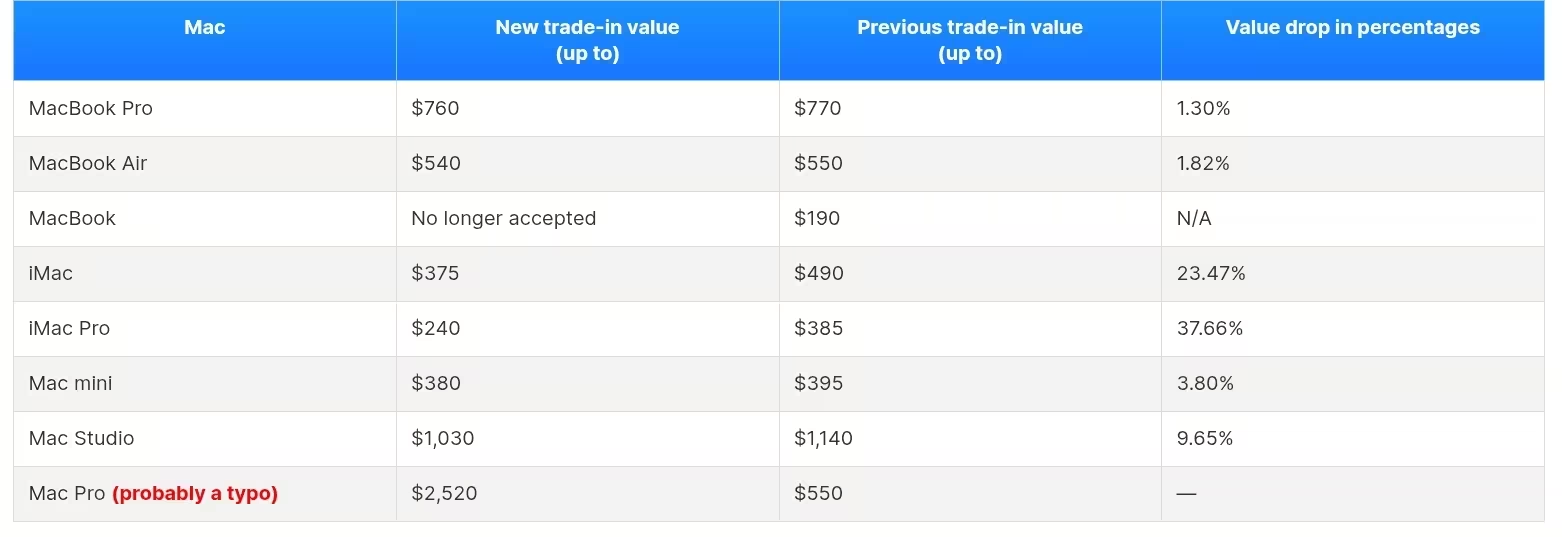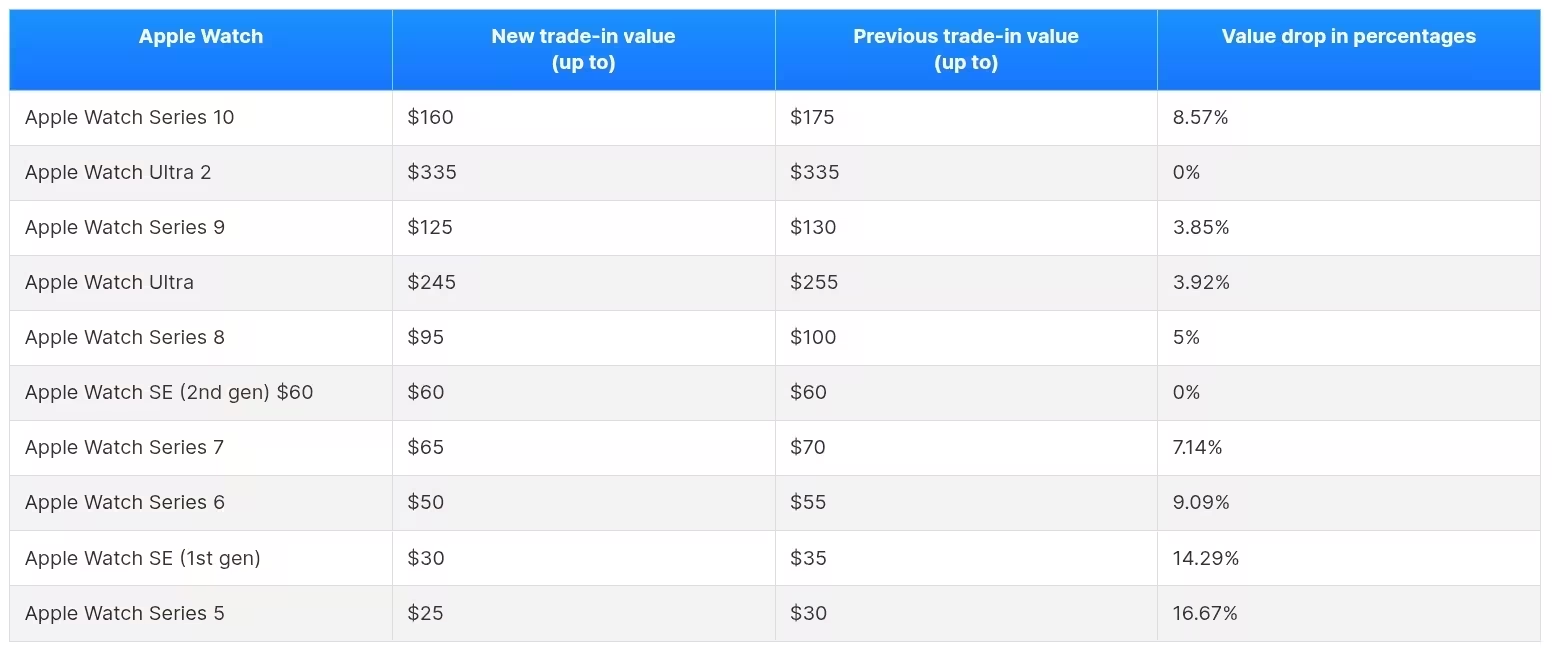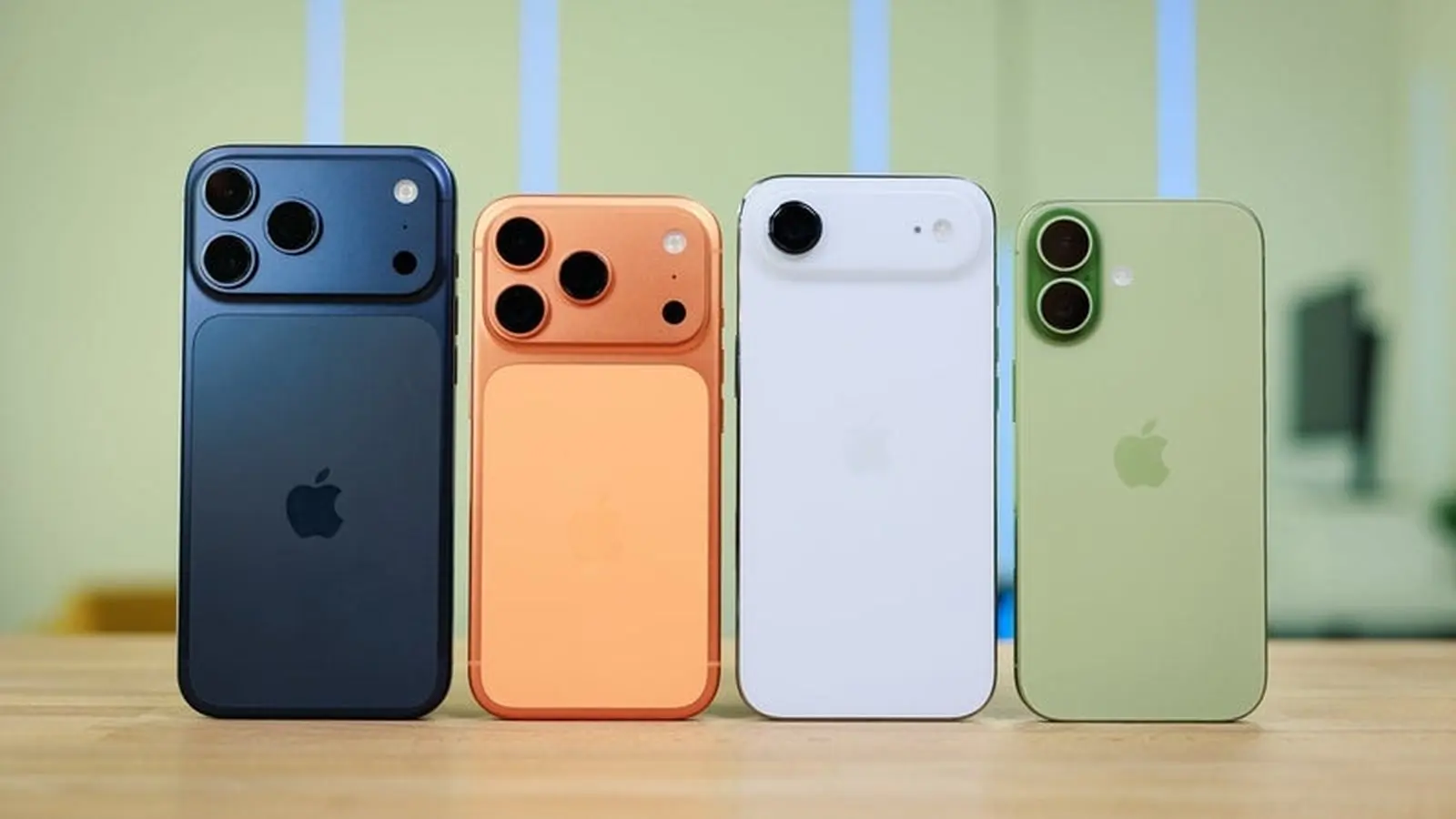4 Minutes
Apple has quietly lowered the maximum trade-in payouts for most devices in the US, trimming values across iPhone, iPad, Mac, and Apple Watch lines. The reductions — in many cases sizable — reshape resale expectations for anyone planning an upgrade.
iPhone trade-ins take the biggest hit
The iPhone range saw the steepest changes. While newer flagships only lost modest amounts — the iPhone 16 Pro Max now tops out at $670 (down $30) and the iPhone 16 Pro at $550 (also down $30) — older models took much larger hits. Notably, the iPhone 15 Pro Max dropped about $160 to $470 (roughly a 25% cut), and the 15 Plus lost around $110 in maximum trade-in value.
Even older handsets weren’t spared: the iPhone 13 Pro Max now maxes out at $300 (down from $370) and the iPhone 12 Pro fell to $160 (around a 27% decline). At the low end, legacy models like the iPhone 8 remain near the bottom with maximum trade-in offers of roughly $40.

Tablets and Macs: mixed signals and one obvious typo
On the iPad side, most models saw modest reductions in the 5–10% range. Curiously, the iPad Air briefly appeared with a slightly higher value — $415 versus the previous $400 — but that looks like a clerical anomaly since the rest of the iPad lineup moved downward.
Mac owners faced significant cuts in several categories. The iMac Pro registered one of the largest falls, sliding from $385 to $240 (about a 37.7% decrease). Standard iMacs dropped around $115, while higher-end machines such as the Mac Studio and MacBook Pro experienced smaller declines between roughly $10 and $110.

Apple’s trade-in chart briefly listed the Mac Pro at $2,520 — a nearly 360% jump from an earlier $550 listing — which is almost certainly a mistake. Historically the Mac Pro hasn’t approached that resale level, so expect Apple to correct the figure.
Apple Watch: small cuts, a few hold steady
The wearable lineup saw lighter adjustments. The Apple Watch Series 10 fell about 8.6% to $160, while Series 5 and Series 6 values dropped by modest amounts (around $5 each). The Apple Watch Ultra 2 and the second-generation SE retained their prior maximum trade-in levels.

Why Apple changes trade-in values
Apple updates trade-in pricing periodically to reflect used device market trends, supply-and-demand shifts, and refurbishment costs. Small swings are normal; what’s notable this time is the scale of the downturn across multiple product families — one of the larger downward adjustments in recent years.

What owners should consider now
- Thinking of upgrading? If you want an Apple trade-in, acting sooner could lock in a higher payout before any further reductions.
- Compare offers: third-party resellers and buyback services often pay more than Apple’s conservative in-store estimates, especially for older models.
- Prepare your device: back up data, sign out of accounts, and remove personal information to speed up the trade-in or sale process.
Apple’s quiet adjustments underscore how quickly resale values can shift. Whether you accept Apple’s trade-in offer or shop the market, a little timing and research can make a meaningful difference to what you get for your old device.
Source: phonearena


Leave a Comment